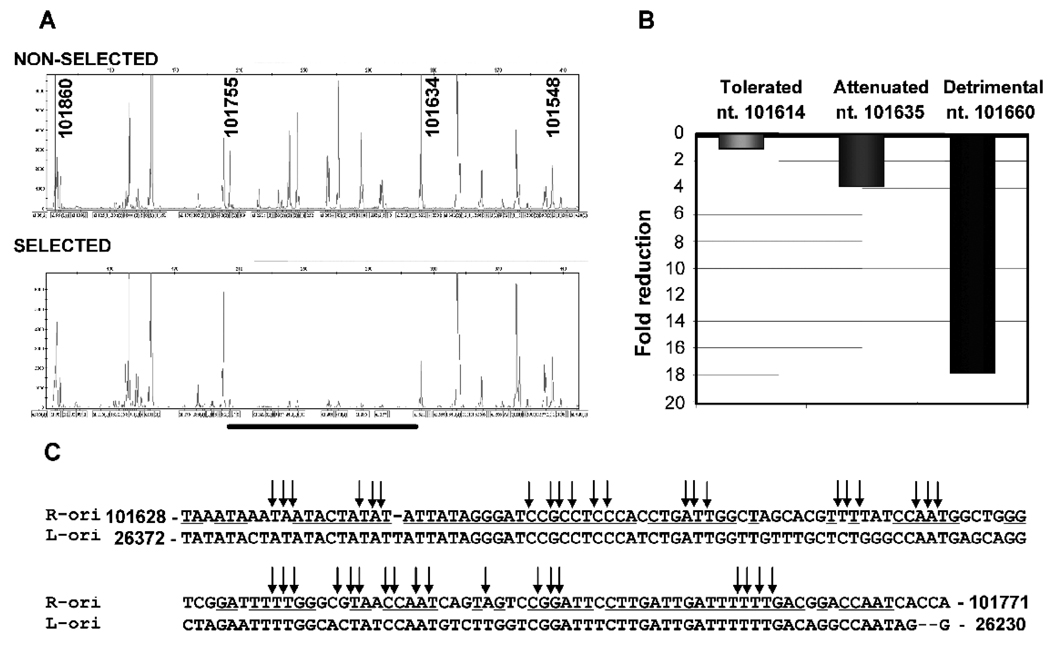Fig. 1.
Identification of essential cis-elements in MHV-68 right oriLyt by a transposon-mediated high-density mutagenesis and genetic foot-printing method. (A) The chromatogram showing the location of 15-bp insertions in the right oriLyt region (nt. 101,860-101,548). Genetic foot-prints of the non-selected (top-panel) and selected (bottom panel) mutant oriLyt pools are shown. Each peak (X-axis) represents the location of 15-bp insertion in the oriLyt region. The fluorescent signal intensity (Y-axis) of each peak indicates the abundance of a particular 15-bp insertion mutant. The region where the 15-bp insertions are detrimental to oriLyt replication is shown (underlined). The MHV-68 genome sequence position is indicated in bold face numbers. Note that the insertion at genome position 101,635 resulted in reduced oriLyt replication. (B) Bar-graph showing the effect of 15-bp insertions on oriLyt replication. The phenotypes of representative insertions are given. (C) The sequence of the right oriLyt region, in which all the 15-bp insertions (arrows) were detrimental for oriLyt replication, is shown in alignment with the sequence of a conserved fragment located in the left oriLyt identified in this study.

